by Steve Selden | Jul 13, 2017 | Churchill News
We hope you all enjoy our first guest blog report from Churchill and Natural Habitat Adventures guide Moira Le Patourel. Her group of travelers experienced a classic and exciting week in Churchill and the photos and report below give a feel of the adventure experienced!
“The first trip of the
summer is always an exciting one in Churchill. Vast Ice floes are visible out in the bay, seemingly close to shore, but just slightly too far away to use the spotting scope to search for polar bears still out on the ice. Bears had already been spotted close to town and our first group of the summer was lucky enough to spot a resting polar bear on the beach, while out on the tundra on their first evening in Churchill.
Things were in full bloom on the tundra in a spectacular array of colours; snow-white from the White Mountain Avens, with their buttercup-yellow center, a carpet of brilliant green from the Sea Purslane, and a vibrant mat of magenta from the Purple Hedysarum. It was certainly a feast for the eyes!
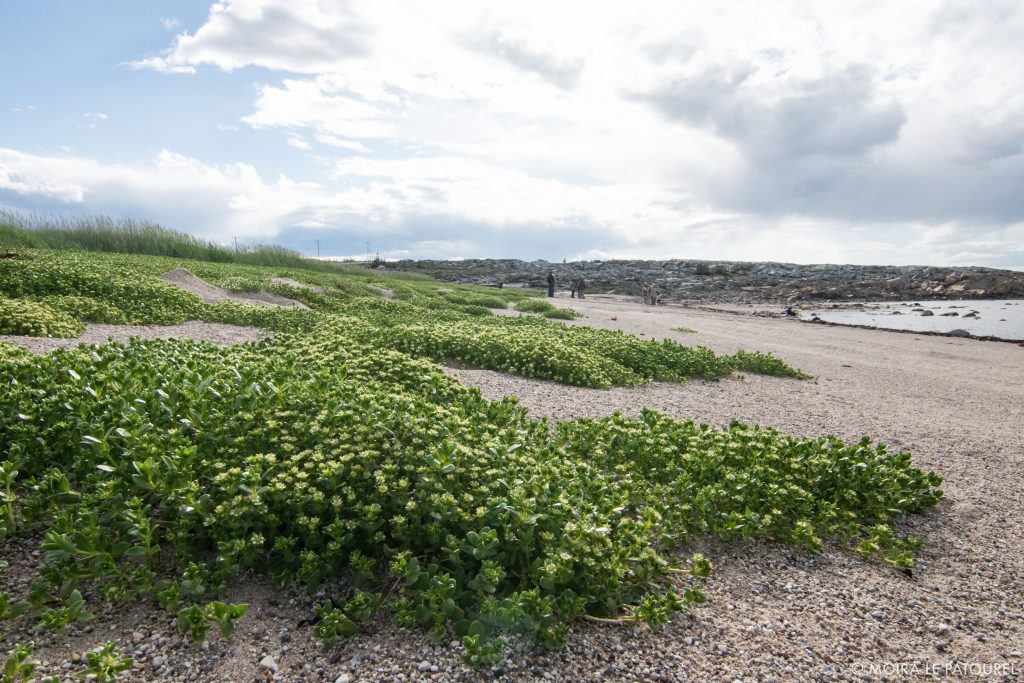
Sea pursalane inhabits the beach areas in Churchill. Moira Le Patourel photo.
Beluga sightings were excellent throughout the trip, with several young calves spotted swimming with their mothers. During our final morning on the zodiacs, the river was all a-splash with beluga activity – pods of feeding-frenzied belugas, young and old, cavorted around the boats in pursuit of their fast-moving prey – capelin. Arctic terns plummeted into the water from the surface, with the white whales pushing the capelin up from below. Quite the sight to behold!
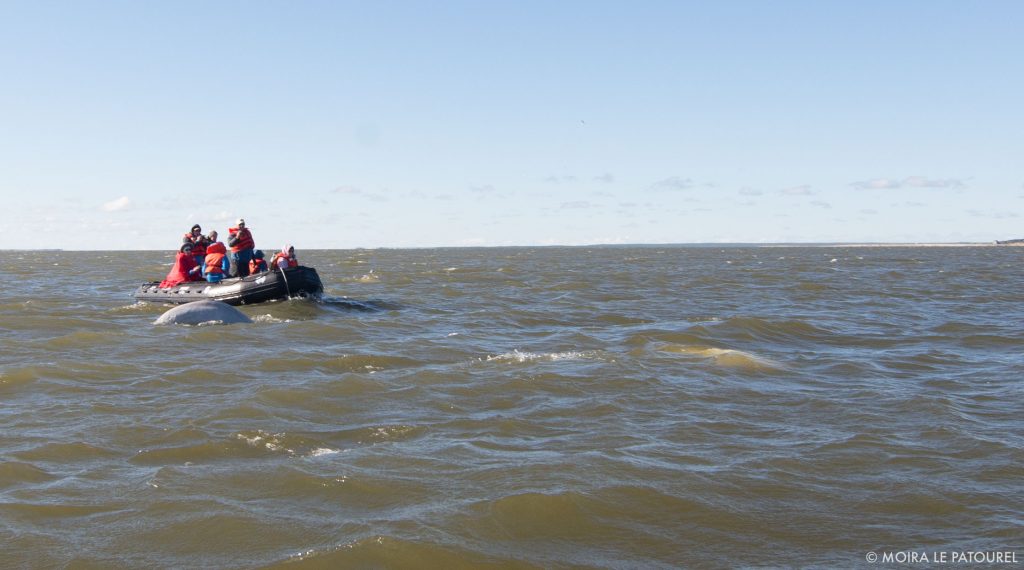
Beluga whales in the Churchill River with excited Nat Hab travelers. Moira Le Patourel photo.
A visit with local sled dogs and their owner was an interesting way for our visitors to learn about what life is like for a musher and his team in the remote sub-
Arctic town of Churchill. With the train to Churchill not running at the moment, the logistics have become more complicated over the past month, and the cost of living has significantly gone up for the residents of Churchill. Our group learned about what those changes meant for mushers and dog teams in the area.
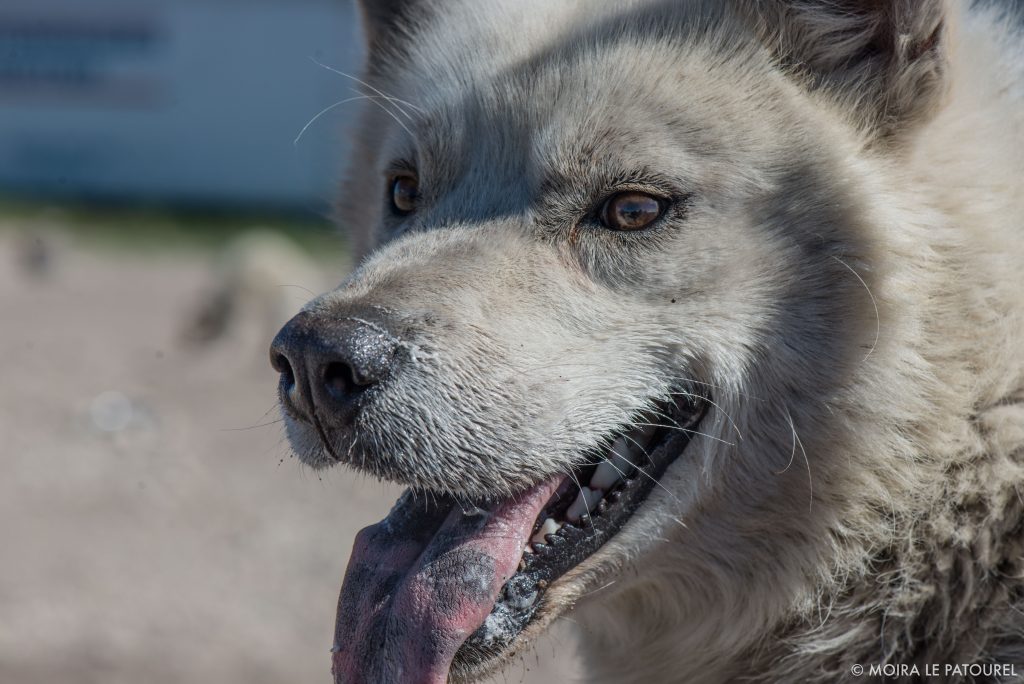
Churchill sled dogs are alaways a popular attraction. Moira Le Patourel photo.
Walks in both tundra and taiga habitat allowed us to spot many different bird species; some of the favourites were nesting/dive-bombing Arctic terns, red-necked phalaropes, lesser yellowlegs, Pacific loons and tundra swans with young.
Churchill certainly is the place to be in the summer, especially for those visitors in search of feathered friends. Many guests on this trip were able to add several species to their life lists.
Many laughs, smiles, hugs and songs (you can’t leave without singing Baby Beluga at least once!) were shared by all for our first adventure in Churchill this summer. Looking forward to what the coming days will bring!”
by Steve Selden | Jul 12, 2017 | Videos
Enjoy this awesome short video from National Geographic with interesting facts about majestic Beluga Whales and their environment. Churchill Summer travelers are currently experiencing these magnificent animals right now in the Churchill River and Hudson Bay. We will be posting updates, photos and videos from Churchill periodically as the summer progresses. Stay tuned for all the exciting news from the “beluga capital of the world”!
by Steve Selden | Jun 23, 2017 | Churchill News
Churchill has been through some tough times lately. Floods resulting from two huge March blizzards have eroded nearly 20 sections of train track from Gillam to Churchill. Eighteen artists from around the world have journeyed to Churchill for the ocean conservation event known as Sea Walls Festival. A couple of the artists have come from as far away as Brazil and New Zealand. With them comes the hope and inspiration this town needs!

Sea Walls mural in Churchill. Alex De Vries – Magnifico photo.
“I just think it’s really amazing to be mindful of communities like this,” said New Zealand artist Elliot O’Donnell, who makes art under the name Askew One.
“We live in a world that is increasingly refocused around city life, and we forget sometimes about the people who live in these really remote places and just kind of how delicate the situation is.”
The artists involved in this project hope to bring awareness to the importance and urgency of protecting the world’s oceans. Part of that protection process involves global warming and its effects on the rest of our habitat.

A grand mural takes shape in Churchill. Alex De Vries – Magnifico photo.
“It’s the ocean that connects us so our relationship with the ocean is very important, and it’s also a very precarious sort of relationship,” stated O’Donnell.
Churchill, on the edge of civilization in the north of Manitoba, has had extreme weather conditions this spring leading to the destruction of a major lifeline of the town, the Hudson Bay Line.Without this transport mode Churchill faces rising costs in food, fuel and other vital supplies to the community. With airplanes the only mode of transportation at the moment, costs will rise for shipping.
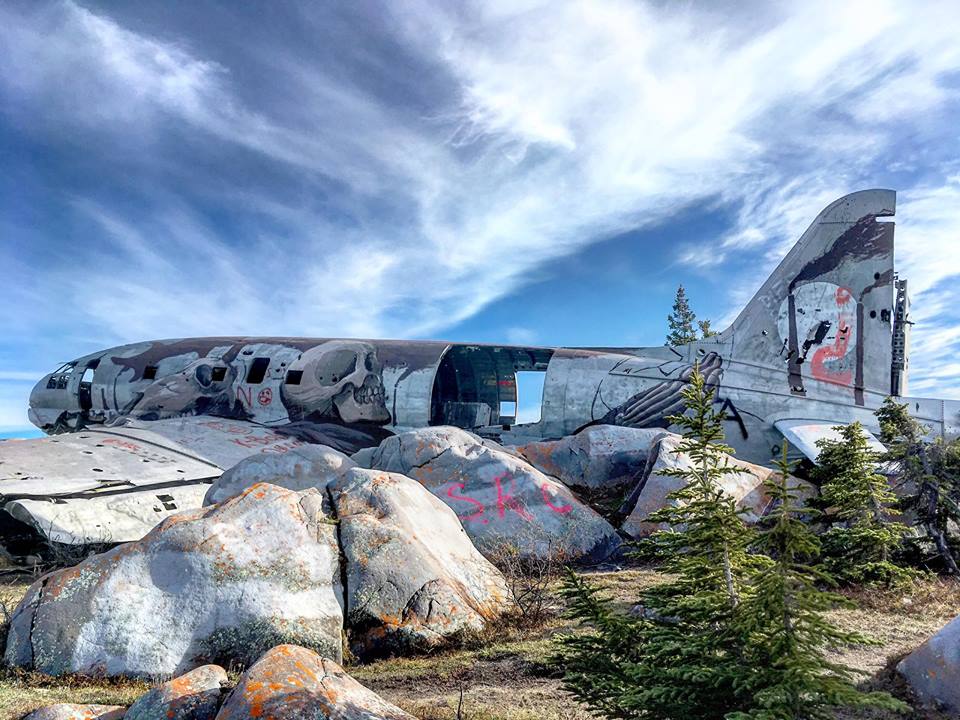
A mural adorns Miss Piggy outside of Churchill. Alex De Vries – Magnifico photo.
The delicate relationship between community and environment is something many of the artists are portraying in their murals. And with the current conditions getting worse we need all the extra motivation and inspiration we can get. Happiness through hope can be conveyed through these unique artworks.
“That’s the underlying tension in this town. It’s the drama under all the stories. It’s really about this kind of symbiotic relationship between man and nature here,” he said.
The Sea Walls festival will run through June 26.
by Steve Selden | Jun 22, 2017 | Videos
This fantastic northern lights video footage is one of the best we have seen in a long time. Getting excited for northern lights visible in Churchill even in August. If you really want to see the surreal show however, come to Churchill for prime northern lights season in January – March. Enjoy!
by Steve Selden | Jun 20, 2017 | Churchill News
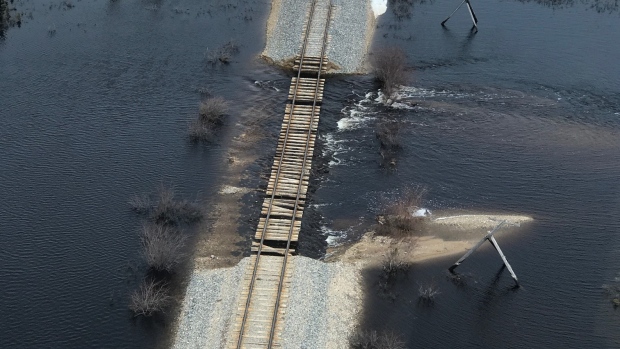
One of the Hudson Bay Line’s washouts between Gillam and Churchill. Omnitrax photo.
Omnitrax does not have the resources to repair the Hudson Bay Railway and is urging the Canadian Government to get involved to help get the trains running again according to Merv Tweed, President of the company’s Canada management team.
“We’ve said publicly that we believe the province and the federal government have to be involved in this. It is a natural disaster,” Omnitrax Canada president Mervin Tweed said Friday.
Omnitrax is claiming there are at least 24 track sections between Gillam and Churchill, Manitoba that were severely damaged during the spring thaw and floods. Given the complexity of accessing the tracks and the permafrost base they lay on, the company is forecasting spring 2018 as the earliest time the repairs will be completed.
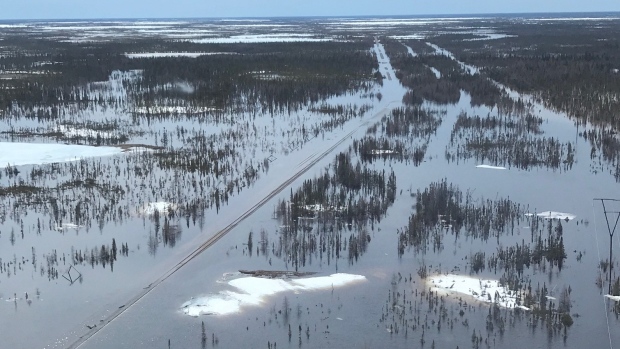
Flooding has caused some of the Hudson Bay Rail line to be underwater. Omnitrax photo.
Omnitrax has conducted aerial photo surveillance revealing long stretches of water submerged tracks, culverts displaced and suspended tracks above the ground with water running under them. This type of damage will be difficult to repair with expediency and forethought for future flood damage.
The Canadian government has not committed to any help before knowing what the costs will be.
“I mean, they’re being cautious. It’s hard to do something until you know — like us — what it’s going to cost,” said Tweed.
The Hudson Bay Railway is a lifeline between Churchill and the south. Trains typically bring up everything from fresh groceries to propane gas for heating homes. as well as building materials and anything else needed by residents and businesses. Without this service the economy and lifestyle in Churchill will be drastically affected.
The assessment, including 300 kilometers of tracks, 28 bridges and 600 culverts is beginning this week will take four weeks to analyze the tracks and two more to provide a comprehensive report detailing the process of repairing the line.
Tweed estimates the cost will be far larger than what Omnitrax can afford for the project.
“We don’t believe we have the resources to rebuild what needs to be done,” said Tweed. “Every time we go out we find something else.”
A difficult job ahead for engineers includes walking along the tracks and checking the stability of the line as well as taking soil samples in order to determine ground conditions under the tracks.
“Just getting to that site is going to be a real challenge,” Tweed said.
The tundra north of Gillam is saturated and many areas are covered with water slow to be absorbed by the permafrost – covered ground.
In the meantime, while the track is unusable north of Gillam, a plan to utilize both the Port of Churchill and the town’s airport is being assessed and put in place to cover the shipping deficiency.
Tweed stated that some port, owned by Omnitrax, employees have returned to work in preparation for aiding with additional shipments.
“We were optimistic about a pretty good rail season until the water hit,” Tweed said.










